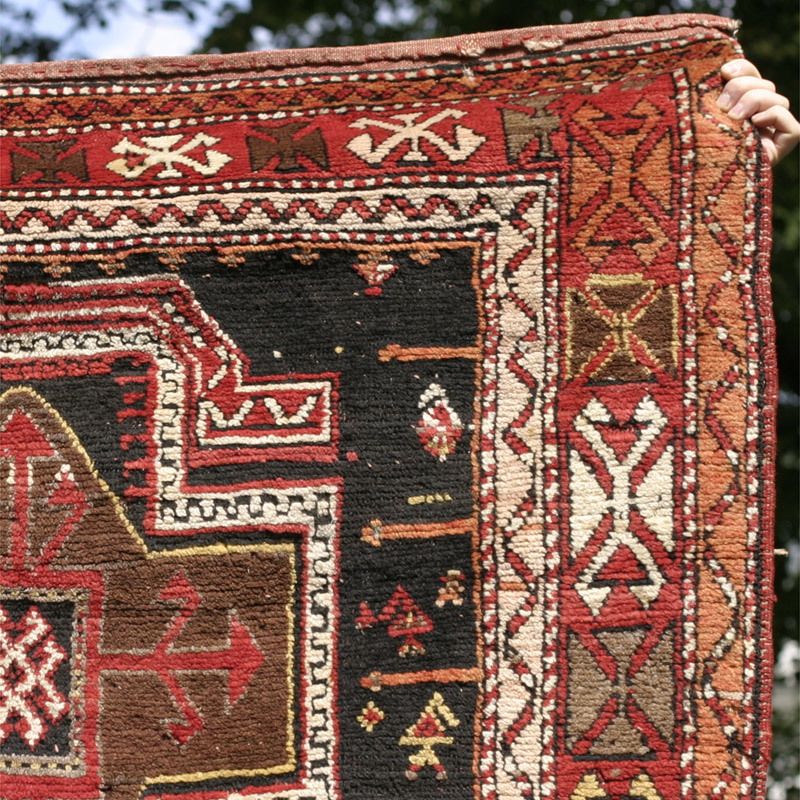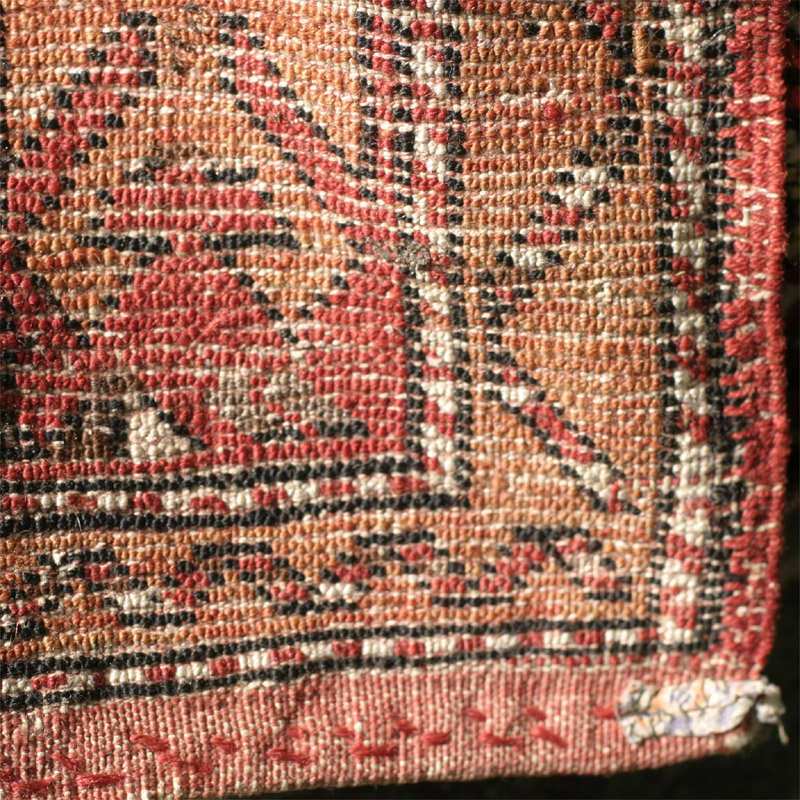This attractive 'Fachralo' double niche design long rug, around last quarter of 19th c., has a row of four medallions ending on both sides in an octagonal mirhab arch element, like that in prayer rugs. One arch contains a geometric element that may be derived from a hanging lamp. I have no clue where in the Caucasus this was actually made, and by whom; some attribute rugs with crosses in the design to Armenians, others are doubtful regarding this theory. In spite of the niche design derived from prayer rugs (the octagon shape of the mirhab is quite common in Caucasian prayer rugs), this rug was certainly not a prayer rug; the bi-directionality alone would make this a nonsense.
Numerous scattered elements (botehs, crosses and hooked diamonds, and even elements that may represent the human form) on dark brown abrashed ground. The design is not yet formulaic like in many of the later 19th c. Caucasian rugs, but shows freedom of drawing and playfulness, especially in the secondary elements. Simple but effective border alternating St. Andrews' crosses and a hooked element evolved from this type of cross; its negative spaces echo the triangular cross arms. These cross shapes as well as cross shapes with central rectrangles inside the medallions could indicate an Armenian provenance. The way certain details such as the meander border running right round the row of 4 connected medallions are handled where they turn around the half-octagon of the niches shows a somewhat inexperienced hand, or a certain carelessness in execution. Perhaps the rug woven by a girl learning the ropes (see also remark on uneven knot tension under structure). It is a perennial topic among rug lovers whether such traits are perceived as adding charm and life, or are simply seen as undesirable imperfections.
The main border is simple but very effective, alternating two geometrical hooked motives.
The rug measures 9ft.1in. x 3ft.11in. (277 x 120 cm). Coarse weave, 6.v,6.h = 36 kpsi, of course symmetrically knotted, all wool construction, no warp depression. Beautiful glossy long pile, black-brown background somewhat corroded. Tan to grey-brown Z3S handspun warps (varying thickness), 2–5 off-white woolen weft shoots, some rose. Very thick pile yarn, 2 threads. Knot pattern on back feel somewhat uneven, grainy; some knots are pulled less tightly then others. Heavy and flexible handle.
Good to excellent long pile, structurally sound, slight corrosion to black-brown field background, with various small areas of moth damage and some fold wear (see images). Good plain red kilims, sewn over at the top, flat red selvages in good state, probably original. I may get this rug washed and repaired, not sure yet, but I think it definitely deserves repair.
Dyes are all natural, very clear and saturated. Noteworthy is a beautiful mottled orange-red that is not just madder-based but probably derived by overdying yellow with weak madder bath. There is also a very light shade of it used in the inner secondary border and in some motives of the main border. I like the multi-coloured background in the third medallion (counted from top) which shows a beautiful abrashed bottle green, a medium blue, and a light and clear yellow.
More photos will follow shortly.













